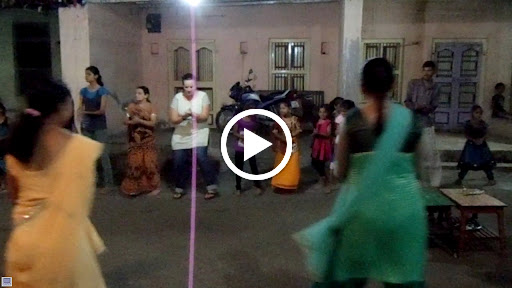My most favourite festival in India, thus far has just ended. Navratri, the festival of nine nights was colourful, entertaining and so much fun. As many of you know, I am not the most coordinated dancer, except for my fabulous rendition of Jai Ho from Slumdog Millionaire. I am especially challenged when it comes to clapping and dancing, which is what Navratri is all about. My first night was rough. Feel free to watch the video below this post (titled Navratri: Night 1). But with a lot of hard work, sweat and serious determination, I got it down after several nights. Each song lasts 30-45 minutes. It took me quite a few days to make it through an entire song. Each night, there are between 5 and 10 songs, depending on the group. Some of my friends would dance until 4 am each morning! In this post is the video from my last night of Navratri. You may think I look gigantic compared to the other dancers. This is not an illusion. I am a giant. At 5 feet, 9 inches, I tower over the majority of women and men in my village and in most of India, actually. My goal of blending in with the crowd was crushed on my first day here.
Navratri celebrates the Goddess Durga. Each October, for 10 days and 9 nights, everyone celebrates this festival, in various ways throughout India. In Gujarat, where I live, we begin each night with a prayer. Most Gujaratis fast all day and only eat after sunset during the nine days. After prayer, we eat prasad, a sugary sweet including too much sugar, coconut and popcorn. This served as my version of RedBull before the dancing began. Then, it's time to dance. The women start by gathering in a big circle around the alter for the goddess. Garba, the style of dancing in which Indians dance in a circle, clapping at intervals, starts slow (Thank God!) and slowly gets faster and faster. The men join in a little later and really speed things up. In bigger cities, professionals dance so fast you can barely focus your eyes!
 |
| Navratri: Night 9. To see the video, click twice. It will take you to a new page. |
As you can see, I am not garba-perfect yet. But I am learning. I attended every night and had so much fun. My friends were forgiving of my mistakes and stepping on their toes and they really appreciated my efforts to participate in their cultural celebrations. Since Navratri ended, I have been secretly having dance parties in my house to keep up with my new moves. I'm willing to teach you if you're interested!

